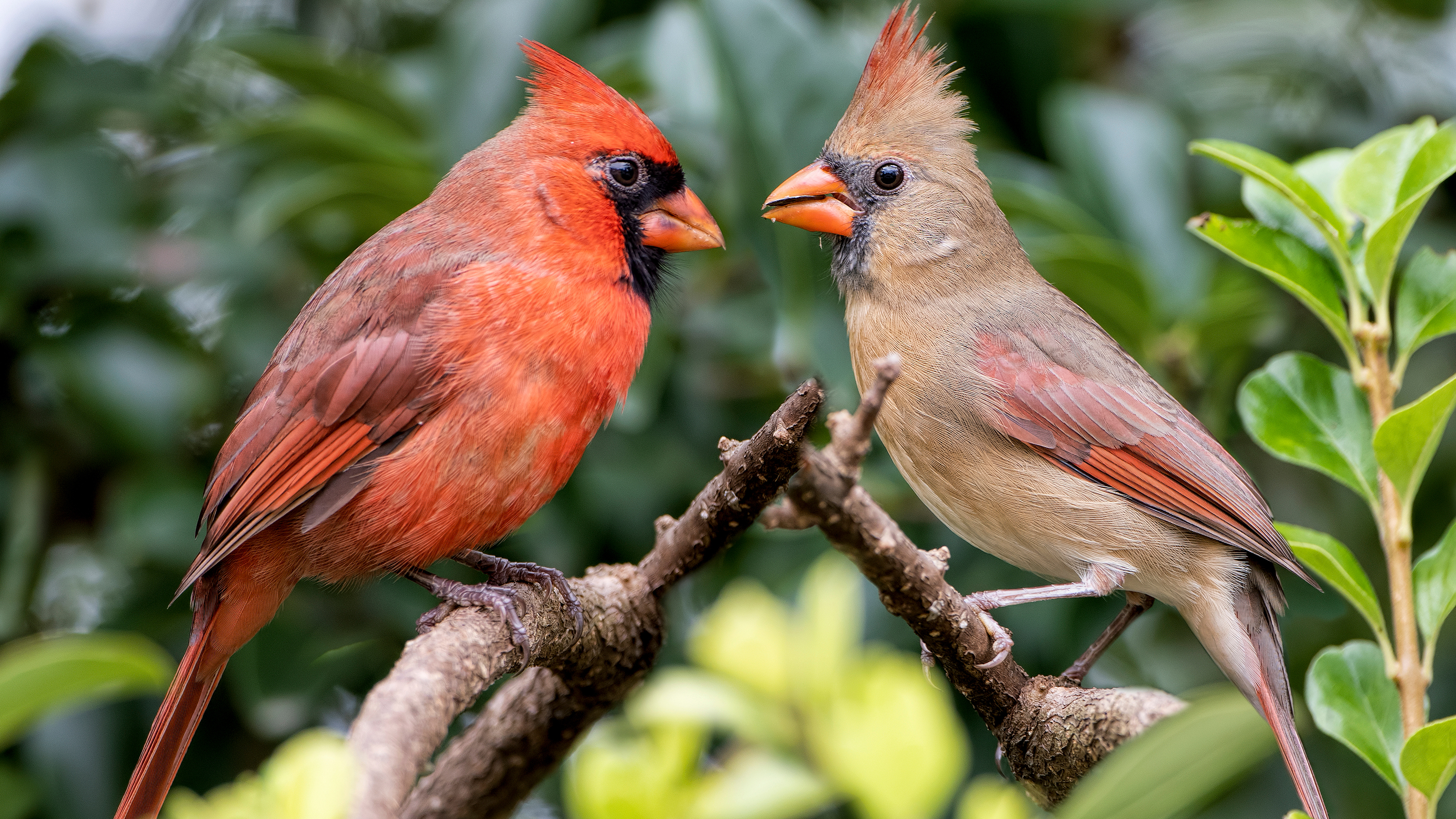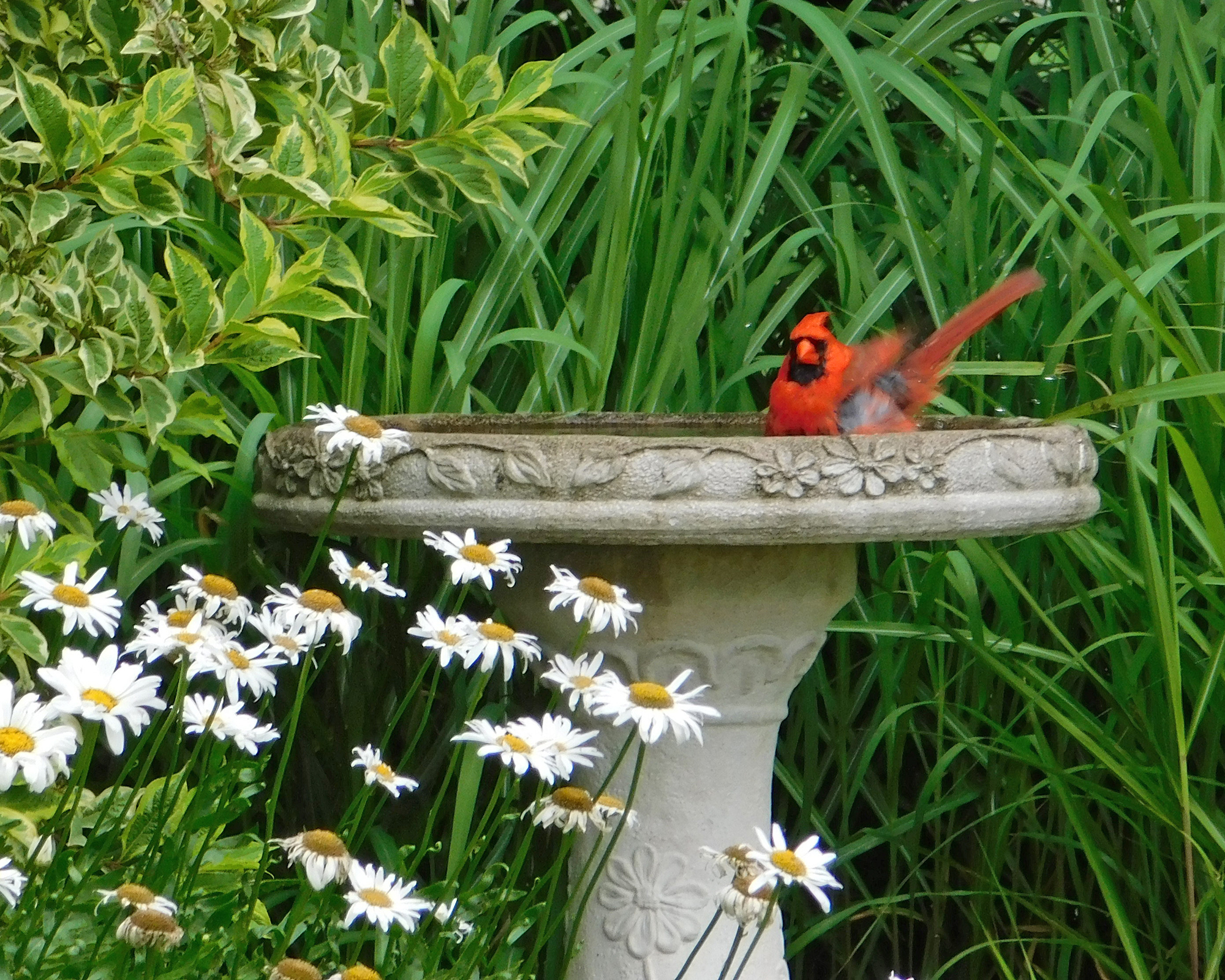How To Attract Cardinals – Get Beautiful Songbirds Flocking To Your Yard
The northern cardinal is a national treasure and a delight to spot in the garden, nesting in shrubbery and flitting between feeders. Discover how to attract this beloved songbird by providing the right food, shelter, and water.


With its vibrant red plumage and mohawk crest, the northern cardinal is one of America’s most iconic and cherished birds. While female colorings are more muted than the male of the species, both sexes share the same sweet whistled song. Mating birds sing to each other during courtship, and to warn of dangers while nesting.
Selected as the official bird of seven states – the most of any bird – cardinals are commonly seen in the eastern and central states, and can occasionally be spotted in southern Arizona and New Mexico.
If you want to know how to attract cardinals to your yard, then be prepared to take a multi-layered approach. In general, attracting birds to your garden involves providing the right food, and a safe environment for them to relax. But all birds have their own unique needs.
Adding a range of different feeders and food types is a great start to satisfying the wider feathered population, but birds also need water and shelter if they are to be regular visitors to your yard.
So what is the secret to attracting cardinals to your garden?

Grow Plants That Attract Cardinals
If your yard doesn’t contain plants that attract cardinals, then putting out feeders won’t entice more than a fleeting visit.
Cardinals require dense bushes for nesting and to protect themselves from predators. A mix of native shrubs and trees is ideal, with a good number of them being evergreen to ensure coverage year-round. Include varieties that bear seeds and berries that attract birds in different seasons, to provide a food source.
Sign up for the Gardening Know How newsletter today and receive a free copy of our e-book "How to Grow Delicious Tomatoes".
Bear in mind cardinals nest low, just 3 to 10 feet off the ground, but enjoy a tall perch to sing from. Cluster different-sized trees and bushes in an area together at the edge of your property, not too close to the house.
Good plants to attract these songbirds include juniper shrubs, mulberry trees, crabapple trees, chokecherry, winterberry holly, elderberry, Eastern red cedar, serviceberry, flowering dogwood, and flowering vines. Grapevine is a great choice, as cardinals use its bark when making nests.
You should also grow seed-bearing annual and perennial plants in beds and borders, such as purple coneflower, sunflower, safflower, zinnia, and marigold.
Cardinals are believed to be attracted to yellow, red, and pink, so try to include these flower colors in your garden.
Think Before You Prune
Cardinals and other wildlife rely on seedheads and berries throughout the colder months of the year.
At the end of the growing season, don’t remove fading flowers that seed. Leaving seed heads intact will ensure cardinals have a food source throughout the colder months.

Choose Unique Bird Feeders To Attract Cardinals
Cardinals need to feel secure when feeding and so prefer a sturdy bird table, platform, or hopper feeder with a tray. However, they will also visit hanging feeders.
The best approach is to use a mix of feeder types containing different food, so you can attract a variety of different birds and please the local cardinal population.
If you are only interested in encouraging our red-feathered friends, then there are unique bird feeders designed to attract cardinals. For example, they may have perches calibrated to the birds’ exact weight – meaning they won’t open for other bird types.
Select The Right Food
When choosing bird seed to attract cardinals, there is only one type you absolutely must include: sunflower. Back-oil sunflower seed is a real favorite of cardinals, and will also attract many other species of birds. Unlike many other birds, cardinals find it easy to crack open striped sunflower seeds, so these are also a good choice, but you can also include hulled seeds. Other seeds they enjoy are safflower, white milo, cracked corn, and peanut hearts.
Cardinals will also enjoy feeding on mealworms and suet, so include these in your offerings.
In addition, if you get the right planting balance in your garden, this will increase insect populations – an important food source for cardinals.
Time Food Tops Ups Carefully
Cardinals are often the first and last birds to visit feeders, feasting early in the morning and again in late evening.
To attract cardinals, it’s best to top up feeders before their evening feed, to ensure there is enough food after other birds have been feeding throughout the day.

Include A Water Source
Cardinals need a reliable water supply for both drinking and bathing. Adding a birdbath to your yard is the ideal way to provide this.
As cardinals are slightly larger birds, it’s best to choose a slightly deeper bath – around 2 or 3 inches.
The water must be regularly changed, as birds need a fresh drinking supply to minimize the risk of disease. It’s also vital that the bath is properly cleaned to prevent algae and bacteria growth. Once a week should be enough.
Though not essential, cardinals appreciate moving water. Pumps and automated watering systems can help keep water in motion.
In winter, bird baths are susceptible to freezing over, which limits their water supply. Therefore, an electric or solar-powered heated birdbath is ideal.
Entice Caterpillars Into Your Yard
During breeding season in the summer, cardinals turn to caterpillars to feed their young, so consider adding caterpillar host plants to your garden to provide this vital supply.
Milkweed, bee balm, purple coneflower, Joe Pye weed, dill, fennel, and parsley are all attractive options for butterflies to lay their eggs.
By fuelling cardinals at every stage of their life, in all seasons, you are likely to find these treasured birds will take up residence in your yard.

Melanie is an experienced gardener and has worked in homes and gardens media for over 20 years. She previously served as Editor on Period Living magazine, and worked for Homes & Gardens, Gardening Etc, Real Homes, and Homebuilding & Renovating. Melanie has spent the last few years transforming her own garden, which is constantly evolving as a work in progress. She is also a passionate organic home grower, having experimented with almost every type of vegetable at some point. In her home, Melanie tends to an extensive houseplant collection and is particularly fond of orchids.